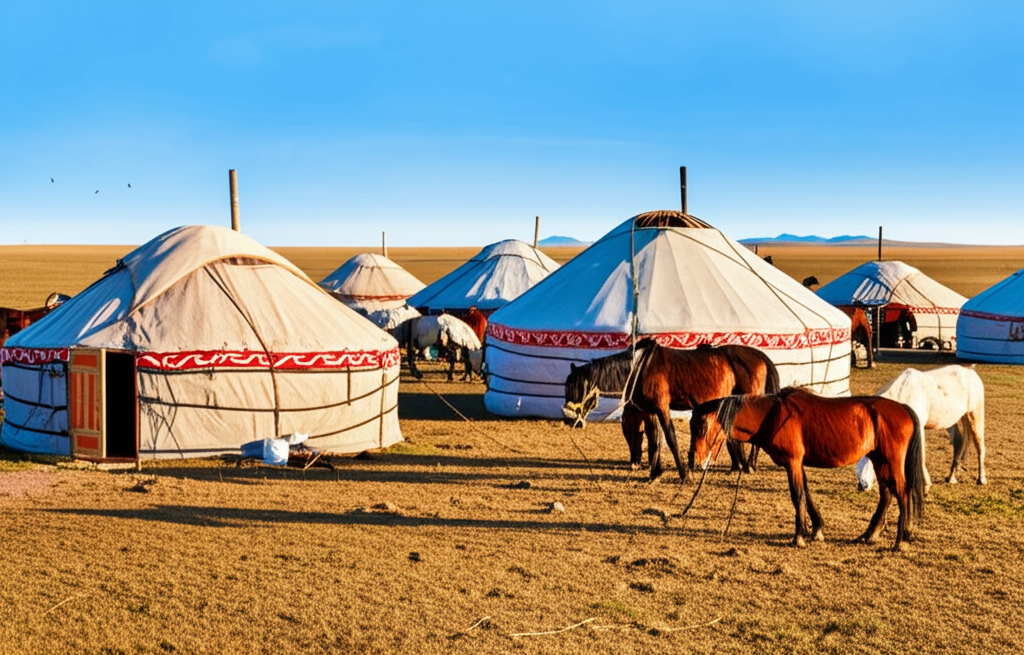


The vast expanse of grassland known as the Eurasian Steppe was, throughout Ancient and Middle Ages, the breeding-ground of wild and unruly barbarian tribes. These pastoralist hunters wandered from place to place in search of grazing for their flocks. The steppes stretched from the easternmost reaches of Mongolia to the plains of Hungary in Europe.
It was from these immense grasslands that waves of migrating nomadic tribes—both Turkic and Mongolian - emerged to harass the Chinese, Persian and Roman empires in ancient times.
The grasslands were sparse in vegetation, and this harsh environment, as well as the endless warring and feuding between tribes, conditioned the steppe-dwellers into formidable warriors. They were feared by settled civilizations whose borderlands they roamed.

The various tribes spent most of their energy fighting each other over pasture, animals, or vendettas and blood feuds. On the rare occasion that a warlord emerged who was strong enough to unite them, they could become an unstoppable force. Fortunately for the settled peoples, it was almost impossible for the feuding tribes to put aside their differences and unite under one leader. It had last happened in distant memory when Attila (d. 453) had led the Huns in an avalanche that swept westward along the Steppe and crashed upon Europe and the Roman Empire.

During the Middle Period, Turkic tribes from the Steppe played an increasingly important role within the Muslim world. During the late Abbasid period, the caliphs - having recognised their superior military abilities - had begun to incorporate Turkic warriors as mercenaries and, later, as paid military units. These Turkic military groups were known as Ghilman (lit. servants/slaves) although many were freemen, and they formed powerful elements within the society.
Eventually, they rose to prominence, and sometimes became the real power behind the caliphs, or even seized power for themselves. The Seljuk Turks had come desperately looking for pasture for their flocks. When they were denied this, they took up the sword and invaded the Abbasid heartlands, creating the great Seljuk Empire (c.1037-1194) in the process.
In Egypt, highly-trained Turkic 'slave-soldiers' formed the crack troops of the Fatimid Caliphate. Eventually, however, they overthrew their Fatimid masters to form the Mamluk Empire (c.1250 –1517).
But at the dawn of the 13th century, a new and more ominous threat was growing, festering deep in the steppe lands to the East. An eruption was about to occur the like of which history had not yet witnessed. A young warrior had emerged who had the strength, ambition and charisma to unite the tribes. The great civilisations of Eurasia - Chinese, Muslim and Christian – all would feel the impact of the explosion. Who was this warrior? Read on...
The Eurasian Steppe is a fascinating area. It stretches all the way from the far East, Mongolia, to as far West as Eastern Europe. Throughout history, nomadic tribes from the Steppe have migrated into Europe, and threatened the borders of the great empires to the South, such as the Roman, Persian, Chinese and, later, the Abbasid empires.
By the Middle and Gunpowder Periods, Turkic and Mongolian people from the Steppe and their descendants had become the rulers of most parts of the Muslim world.